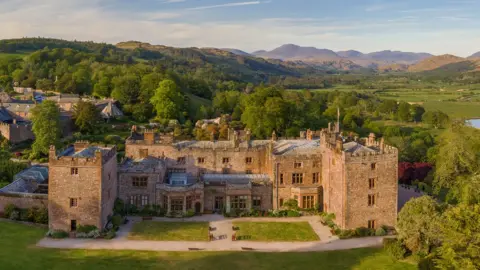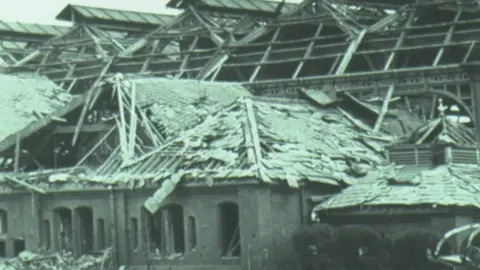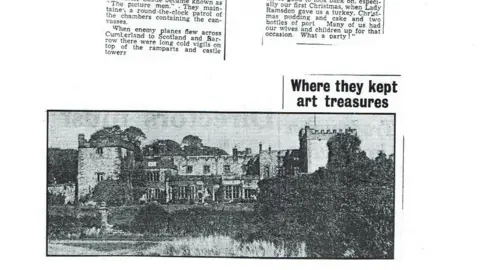Muncaster Castle's secret wartime art mission
 Cumbria Tourism
Cumbria TourismA castle has been remembered for its role in protecting hundreds of valuable paintings during World War Two.
The collection was secretly moved to Muncaster Castle in Cumbria from The Tate Gallery in London, which had become a target for German bombing raids.
Nine men from the gallery, known as "The Picture Men", travelled with the collection.
They also kept a round-the-clock patrol of the rooms holding the masterpieces.

Historian Dr Rob David said more than 700 pieces, including works by Van Gogh, Turner and Manet, were relocated to the castle in secret on 24 August, 1939.
"It was a big scale thing," he said.
"If you think that 700 or 800 of the nation's greatest pictures were stored here in addition to the castle itself, it does add a very big amount to what must have been a high insurance bill from the point of view of guarding it and looking after it.
"It was kept secret and no one, not even people in this part of the world, apart from maybe a few local people, cottoned onto that.
"The most famous painting, looking at the list now, would be Van Gogh.
"They survived the war because they were brought here."
The Tate Gallery - now known as Tate Britain - was badly damaged during the London Blitz in September 1940.

Muncaster was chosen for the relocation due to its remote location in western Cumbria, an area that had been safe from the German bombing raids.
However, concerns that it may come under attack began to grow when Barrow was bombed in 1941.
"The Barrow Blitz was probably the most frightening moment that the Tate men had," Dr David said.
"If Barrow was being bombed, it meant this area wasn't as safe as they had hoped."

At the time, Muncaster Castle was the Cumberland home of Sir John and Lady Ramsden.
Sir Peter Frost Pennington's wife's family have lived in the castle for 800 years.
He said Sir John was happy to receive the art because it meant the castle did not have to take in any evacuees.
"He was overjoyed because it protected us from the threatened hoards of small children," he said.
"It's fascinating that now we love having small children here, enjoying the place but Sir John obviously didn't want loads of kids running around.
"Many places like Muncaster were requisitioned for the war effort, and to get the Tate here he must have been cock-a-hoop."
 Cumbria Tourism
Cumbria TourismWhen the war ended, the castle's secret wartime mission was finally revealed.
"Newspapers picked up on it very quickly, particularly because Muncaster was the furthest place from London where anything was stored," Dr David said.
"They had interviewed some of the people who had been here for five or six years, Londoners who suddenly found themselves in the middle of the countryside.
"It had to be worth it.
"Had any of the pictures remained in London, the chances are they would have been very badly damaged.
He added that Muncaster Castle had played "a very significant part" in World War Two because "we can go to the Tate collection and see the paintings."

Why not follow BBC North West on Facebook, X, and Instagram? You can also send story ideas to [email protected]
